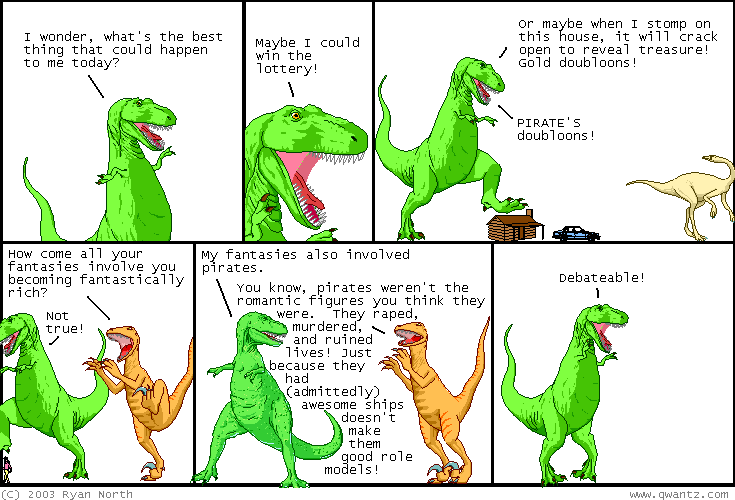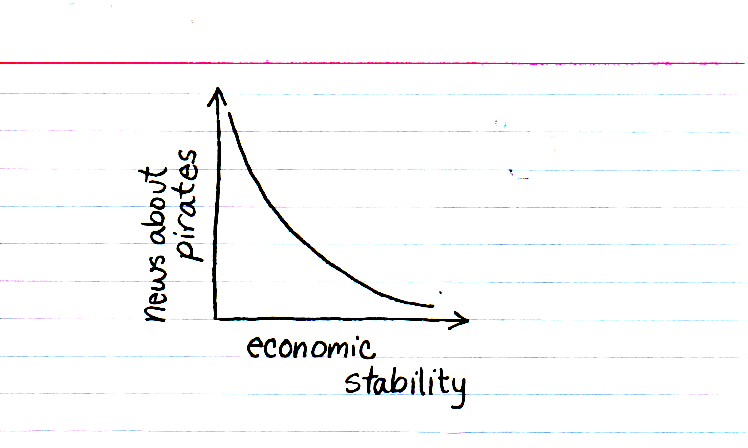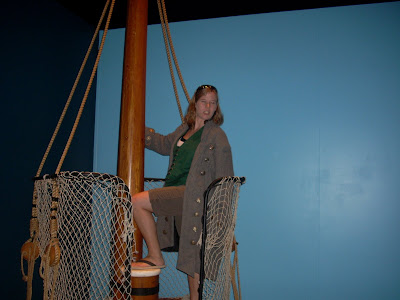But rather, as has been extensively well-documented on the pirate blog, Catherine and I are perhaps understandably concerned with being taken seriously, not in spite of, but rather because of, our study of something as popular as pirates. So we're always on the look-out for cases where popular culture is treated as analytically relevant to scholarly research, and the BBC today was happy to oblige. According to an article entitled "Science ponders 'zombie attack'," mathematical researchers at the University of Ottawa have used the hypothetical scenario of a zombie attack as an exercise in infectious disease modeling.
Professor Robert Smith? (the question mark is part of his surname and not a typographical mistake) and colleagues wrote: "We model a zombie attack using biological assumptions based on popular zombie movies. We introduce a basic model for zombie infection and illustrate the outcome with numerical solutions."The researchers only considered old-school slow zombies, but even so, the results were worrying:
... their analysis revealed that a strategy of capturing or curing the zombies would only put off the inevitable. In their scientific paper, the authors conclude that humanity's only hope is to "hit them [the undead] hard and hit them often". They added: "It's imperative that zombies are dealt with quickly or else... we are all in a great deal of trouble." According to the researchers, the key difference between the zombies and the spread of real infections is that "zombies can come back to life".This study (available in full here) is an example of the "popular culture as a mirror" approach outlined in the introduction to Harry Potter and International Relations (11-13), as can be seen from the article's abstract:
Zombies are a popular figure in pop culture/entertainment and they are usually portrayed as being brought about through an outbreak or epidemic. Consequently, we model a zombie attack, using biological assumptions based on popular zombie movies. We introduce a basic model for zombie infection, determine equilibria and their stability, and illustrate the outcome with numerical solutions. We then refine the model to introduce a latent period of zombification, whereby humans are infected, but not infectious, before becoming undead. We then modify the model to include the effects of possible quarantine or a cure. Finally, we examine the impact of regular, impulsive reductions in the number of zombies and derive conditions under which eradication can occur. We show that only quick, aggressive attacks can stave off the doomsday scenario: the collapse of society as zombies overtake us all.
Meanwhile, on his Foreign Policy blog, Daniel Drezner briefly and light-heartedly applies some theories of International Relations to a zombie attack. While Drezner's analysis is not fully fleshed-out (sorry!), a brief survey (n=3) I conducted in the last 5 minutes unanimously suggests that zombies should probably be considered alongside Kosovo to understand IR theory. As Daniel Nexon and Iver Neumann write, "The mirror approach is broader than simply deploying popular culture artifacts as a teaching aid. IR scholars can examine popular culture as a medium for exploring theoretical concepts, dilemmas of foreign policy, and the like" (12). As an important caveat, 2/3 of respondents conditioned their response on zombie attacks, unlike extraterrestrial visitations, remaining confined to the realm of hypothetical thought experiments.

















